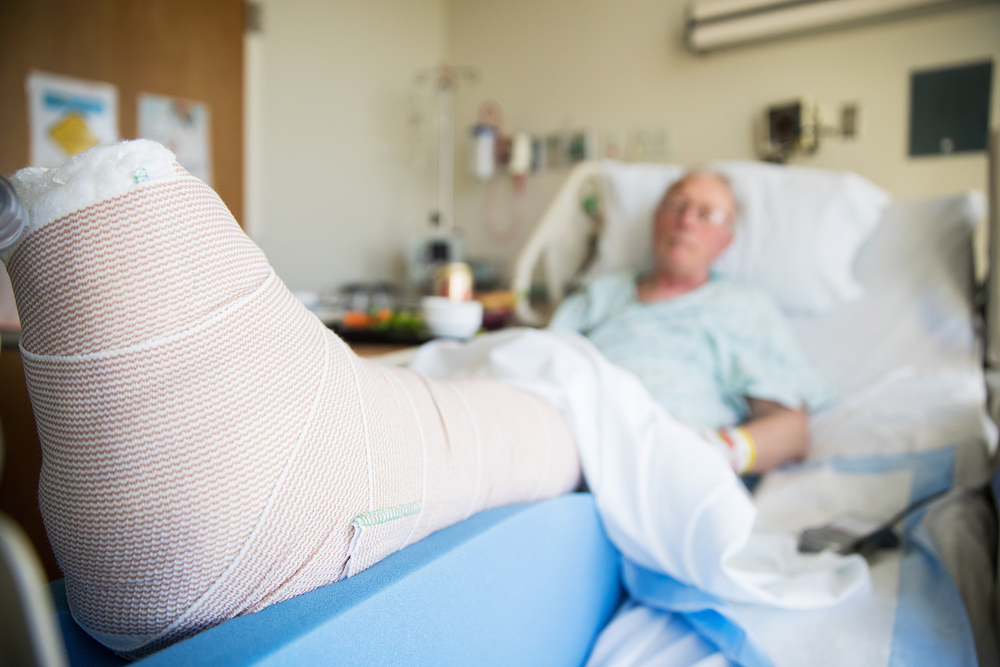Wounds That Won’t Heal in Elderly Adults
Category:

Our body’s ability to heal wounds and fight off illness naturally begins to diminish as we age, leaving seniors vulnerable to chronic wounds. However, if you’ve noticed your loved one has slow healing sores on their body or skin that won’t heal, it may be a sign of an underlying issue, or even the side effect of drugs that delay wound healing. In this post, we’ll explain why seniors heal more slowly and examine common causes of wounds that won’t heal in elderly patients.
Why Do Seniors Heal More Slowly?
The elderly can heal from most wounds, given adequate time, but aging causes the healing process to slow significantly, and all phases of wound healing are affected. Healing from a wound is generally broken down into three phases:
- During the inflammation phase, our immune system works to clean the wound by cleansing any remaining contaminants, bacteria, and dead cells.
- During the regenerative phase, our bodies replace damaged skin cells, repair blood vessels, and close the wound to protect against bacteria.
- During the remodeling phase, which can take years depending on the severity of the injury, the process is repeated again and again to strengthen the new skin.
In elderly patients, the inflammatory response is decreased or delayed and though the remodeling phase does occur, it is at a severely reduced capacity. Seniors are also predisposed to diseases which affect wound healing, including chronic blood vessel disease and diabetes.
Slow Skin Healing Causes
According to Harvard Health Publishing, our body’s ability to repair the skin diminishes as we get older because there aren’t as many growth factors and stem cells in the skin. As we mentioned above, seniors are both more likely to contract an illness that impacts healing and are more impacted by those illnesses than younger folks.
Another common cause of skin breaking down in elderly patients are drugs that delay wound healing. Many common forms of medication can inhibit your body’s ability to heal wounds, including anticoagulants, NSAIDs, chemotherapeutic agents, DMARDs, immunosuppressants, and corticosteroids.
Other common issues seniors face that might lead to skin breaking down in the elderly include dry skin, repeat trauma, and malnutrition.
At What Age Does Healing Begin to Slow Down?
What age your healing will begin to slow down varies significantly from person to person, but as we reach adulthood and enter middle age, our healing capability gradually decreases.
According to Matthew Steinhauser, an associate professor of medicine at the University of Pittsburgh, “Aside from the negative impacts of age-associated diseases, cells themselves age. In an extreme sign of aging called cellular senescence, cells permanently lose the ability to divide. Senescent cells accumulate in skin and many other organs as people age and cause a host of problems.”
Because our skin cells divide more slowly, or stop dividing entirely, senior’s skin becomes thinner. The replacement of fat cells also becomes more difficult, leaving no cushioning layer under the skin. These two issues lead the skin to be more prone to injury in the first place.
Download Our FREE Path to Care Guide
How Long Does it Take for Skin to Regrow in Seniors?
Because a senior’s ability to heal wounds can be tricky, proactive responses to medical problems is key to ensuring proper recovery. Unfortunately, beyond making sure wound dressings are changed frequently and proper use of antibiotics to treat infection, the best thing you can do for your senior is do your best to prevent injury in the first place through proper care.
To learn more about our home care services, contact our caregiving team today at 1-800-GRISWOLD or find a Caregiver near you.
Subscribe
Date: 2024-05-29
Category:

